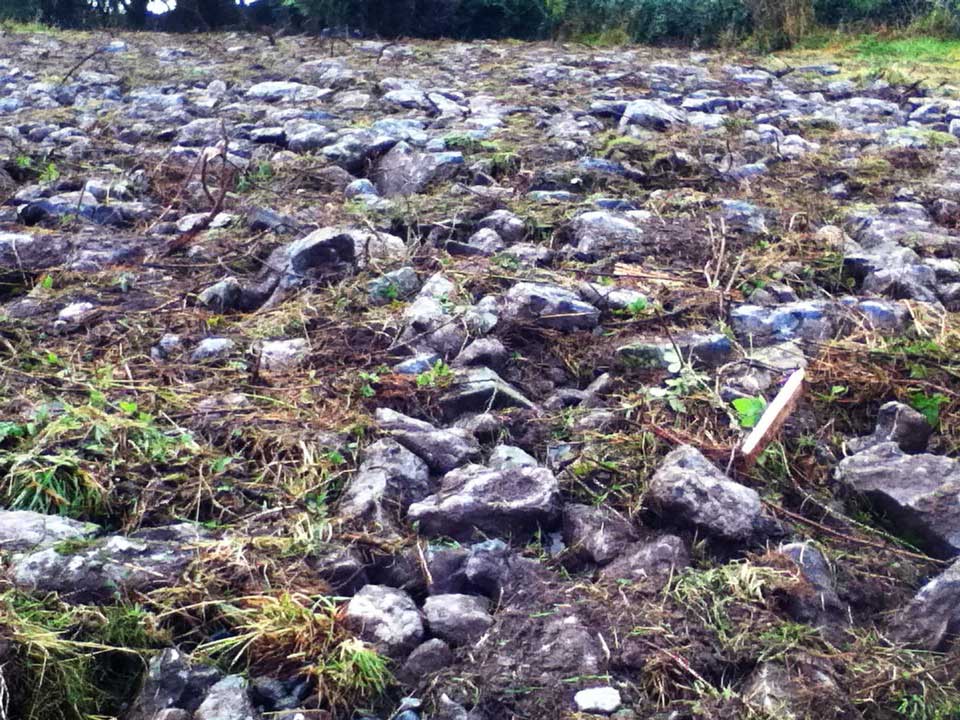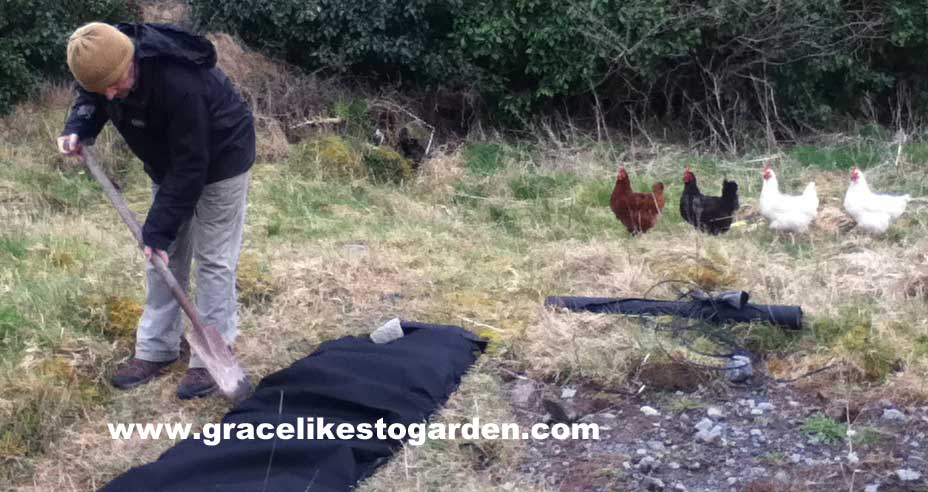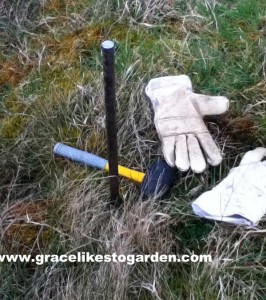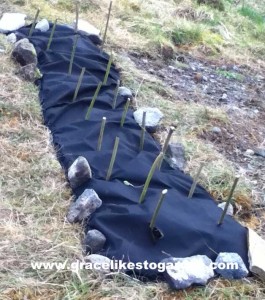 Growing willow is something I wanted to do since I went to a workshop in willow weaving with Mark Wilson in Irish Seed Savers.
Growing willow is something I wanted to do since I went to a workshop in willow weaving with Mark Wilson in Irish Seed Savers.
GROWING WILLOW
When I got home I couldn’t wait to set about starting a new willow bed in our garden so I started the very next day – with kind help from my beloved. So, rain or no rain, up the top of the garden we went! Have I mentioned before that our garden is full of rocks? Well it is you can see some of them here.
I knew this task wasn’t going to be as straightforward as it was at the workshop, which was held in a boggy meadow in Clare with lovely soft brown soil. Our little chunk of outer Burren is more like a carpet of stones and rocks – joined together by a tangled web of blackberry briar! The picture above shows our neighbour’s garden after they removed the briar.
MY BEAUTIFUL SPIKE
Still you have to work around these things and this is where the spike comes in. I mentioned in my post about learning willow weaving that I had been unsuccessfully searching for a spike to make rod-shaped holes.
It turned out that Mark actually makes them himself at his amazing forge in Mountshannon. He kindly offered to make me one and we drove over on Sunday morning to collect it. There it is below – isn’t it great?
I chose the softest most ‘soily’ piece of our garden and used the spike to find places between the rocks soft enough and large enough to plant the willow in. I know this spike is going to become one of our most used tool in the garden and will probably become known as my beloved spike! You can see Mark’s forge here.
PLANTING WILLOW
We began by laying down mipex and using a spade to tuck it in to the ground the way we learned at the workshop. The hens found M’s efforts fascinating as you can see.

Hubby And The Hens
It was much harder to ‘tuck-in’ the mipex in our garden thanin the mushy meadow of Seed Savers in Clare. We had to resort to adding rocks to keep the fabric down which is something we are getting very used to – rocks being part of our armour against the crashing Atlantic storms.
The next stage was to plant the willow. These were cut into 12 inch long rods, with angled cuts and inserted at 12 inch intervals. I managed to remember to plant them so the buds were facing upwards.
It would be so embarrassing, not to mention frustrating, to find out that we had planted them all upside down – not that I’ve ever done that before!
This is the finished bed. It’s not perfect and it may look a little bit a spikey grave from a cheap horror film, but nothing’s perfect here, so we do our best and make the best of what we have.
I am really hoping this willow bed works and that we eventually have a constant supply of willow to make fences for our garden. Who knows I might even learn to make a willow teepee one of these days…
If anyone has any experience in growing Willow I would love to hear from you and as usual, all comments are very welcome. Hearing from other garden-heads is always great!
Best of luck with your gardening.
Grace











Recent Comments